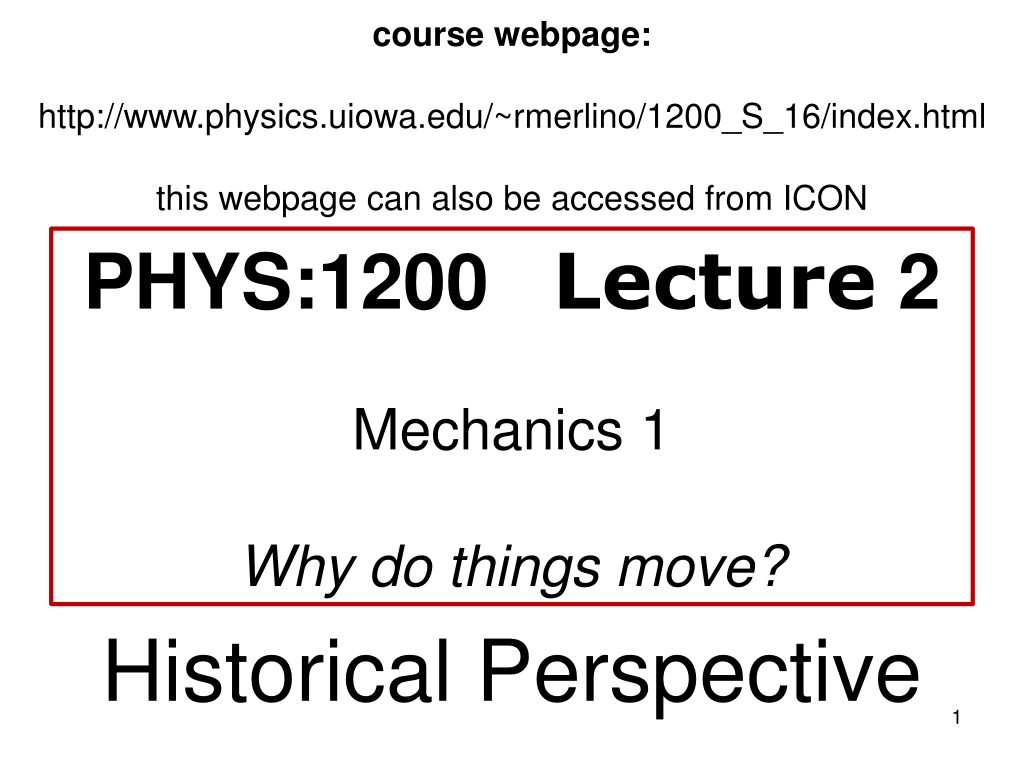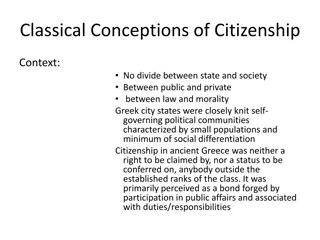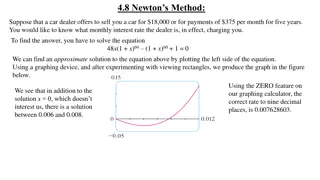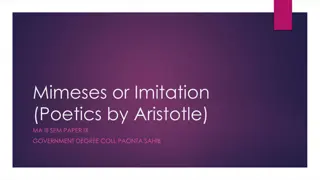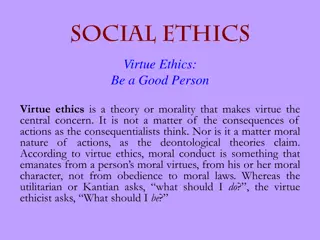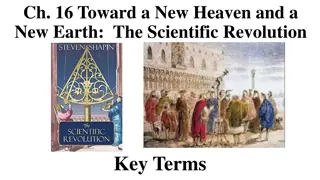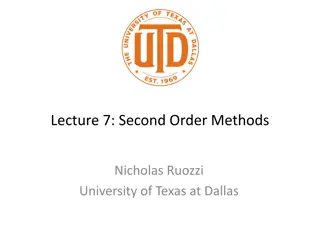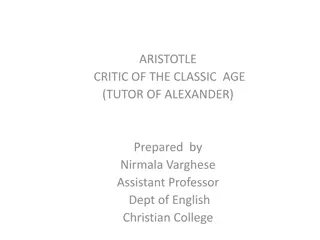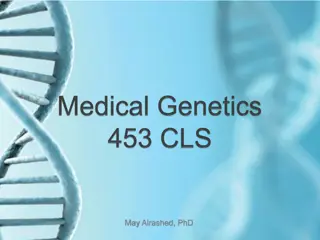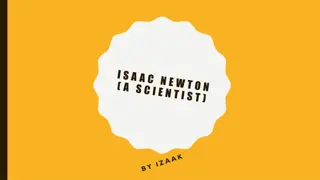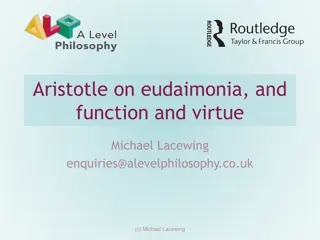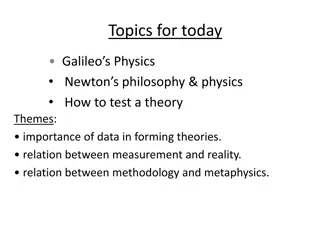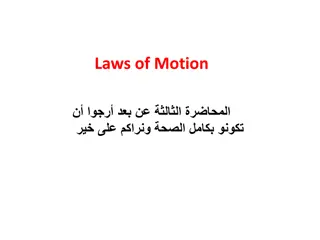Evolution of Scientific Thought: From Aristotle to Newton
Explore the historical perspectives of scientific giants like Aristotle, Galileo, Tycho Brahe, Kepler, and Isaac Newton, as they revolutionized our understanding of motion and the universe. Witness the shift from ancient beliefs to modern scientific principles, culminating in Newton's groundbreaking Laws of Mechanics and Gravity.
Download Presentation

Please find below an Image/Link to download the presentation.
The content on the website is provided AS IS for your information and personal use only. It may not be sold, licensed, or shared on other websites without obtaining consent from the author.If you encounter any issues during the download, it is possible that the publisher has removed the file from their server.
You are allowed to download the files provided on this website for personal or commercial use, subject to the condition that they are used lawfully. All files are the property of their respective owners.
The content on the website is provided AS IS for your information and personal use only. It may not be sold, licensed, or shared on other websites without obtaining consent from the author.
E N D
Presentation Transcript
course webpage: http://www.physics.uiowa.edu/~rmerlino/1200_S_16/index.html this webpage can also be accessed from ICON PHYS:1200 Lecture 2 Mechanics 1 Why do things move? Historical Perspective 1
Aristotle 350 BC Was the final word on any scientific question Influenced scientific thought until the end of the 17th century Believed that the natural state of an object was to be at rest He was WRONG! 2
Galileo 1564-1642 To understand nature, you must first observe it He is considered the Father of Modern Science Imprisoned by Pope Urban VIII in 1633 for advocating that the earth was a planet revolving around the sun (heliocentric hypothesis) 359 years later, Pope John Paul II in 1992 declared that the Church was in error regarding Galileo. 3
Galileo, continued Previous thinking, accepted for 15 centuries, held that the earth was the center of the universe (geocentric hypothesis) Invented the first useful telescope in 1609 Discovered the rings of Saturn He performed the first experimental studies of motion 4
Tycho Brahe (1546-1601) and Johannes Kepler (1571-1630) Tycho Brahe compiled the first detailed observational data on planetary motion (Mars), without a telescope! No one had previously attempted to make so many planetary observations. T. Brahe Johannes Kepler derived the laws of planetary motion using the data obtained by Brahe. J. Kepler 5
Isaac Newton Born Jan 4, 1642 Published ThePrincipia in 1687, considered the greatest scientific book ever written Discovered the 3 laws of mechanics, known as Newton s Laws Based on the work of Kepler, he discovered the Law of Gravity 6
Newton, continued Showed that the same laws that govern the fall of objects on earth also govern the motion of the planets. Newton s work followed directly from the experimental work of Galileo and Kepler s analysis of the observations of Brahe Scientific progress: Brahe Galileo & Kepler Newton 7
Why does something move? Because nothing stops it! 8
Newtons laws of motion Newton s 1st law (Galileo s principle of inertia) A body at rest tends to remain at rest; a body in motion tends to remain in motion. Newton s 2nd law (law of dynamics) The rate of change of the velocity of an object (i.e., its acceleration), is the net force exerted on it divided by its mass. Newton s 3rd law For every action (force) there is an equal and opposite reaction. 9
Law of Inertia - examples If you are at rest, you tend to stay at rest; if you are moving, you tend to keep moving, unless something stops you. Pull the tablecloth out from under the dishes Knock the card out from under the marble Hoop and Pen Hammer head Shake the water off of your hands The car on the air track keeps going Homer not wearing his seatbelt 10
Dogs use the principle of inertia! When a dog is wet, he twists his body back and forth to shake off the water. When the dog rotates his body in one direction, the water is set into motion. When the dog twists the other way, the water drops keep moving in the original direction and fly off of him. We do the same thing when we shake our hands after washing them. 11
Galileos principle of Inertia A body at rest tends to remain at rest A body in motion tends to remain in motion Or stated in another way: You do not have to keep pushing on an object to keep it moving If you give an object a push, and if nothing tries to stop it, (like friction) it will keep going The natural state of an object is not rest 12
Ice Hockey 13
Physics and Ice Hockey No force is needed to keep the puck moving forward after it leaves the player s stick. 14
What is inertia? All objects have it It is the tendency to resist changes in velocity if an object is at rest, it stays at rest if an object is moving, it keeps moving Mass is a measure of the inertia of a body, in units of kilograms (kg)= 1000 grams* Mass is NOT the same as weight ! *The complete definition of a physical quantity must describe how it is measured and in what units it is measured. 15
Bart is on the moving train and then jumps straight up on the moving train will he land: 1) on the ground, or 2) on the train? Bart maintains his forward motion even as he jumps up. He lands on the train. 16
Other examples Having a catch on a plane, bus or train Throwing a ball up and down while walking Dribbling a basketball while running 17
Refined Law of Inertia No force (push or pull) is needed to keep an object moving with constant velocity Constant velocity- moving in a straight line with constant speed No stopping or turning Note that a body at rest has a constant velocity of zero 18
Concepts: speed and velocity Speed: How fast am I going? measured in miles per hour (mph), kilometers per hour (km/h), feet per second (ft/s), meters per second (m/s), . . . distance time speed = = distance time 19
Velocity includes speed and direction Velocityincludes information both about the speed (magnitude) and direction, not only how fast, but also in what direction It is what we call a vector quantity one having both magnitude and direction Formula to calculate the magnitude d v = t 20
Example The average human can walk at 5 km/hr [1 kilometer (km) = 1000 m]. If a person walks at this rate for half a day, how far would he or she travel? Answer Since v = d / t, then d = v t d = v t = 5 km/hr 12 hr = 60 km 21
Position vs. time plots v = d / t Case A: speed is 20 m/10 s = 2.0 m/s Case B: speed is 10 m/10 s = 1.0 m/s Case C: speed is 5 m/10 s = 0.5 m/s 22
EXAMPLE distance (meters) 6 m 3 m 0 0 1 2 3 4 5 6 time (seconds) t = 0 to t = 1 s t = 1 s to t = 3 s t = 3 s to t = 6 s velocity = 3 m / 1s = 3 m/s velocity = 0 m/s (at rest) velocity = 3 m / 3 s = 1 m/s 23
